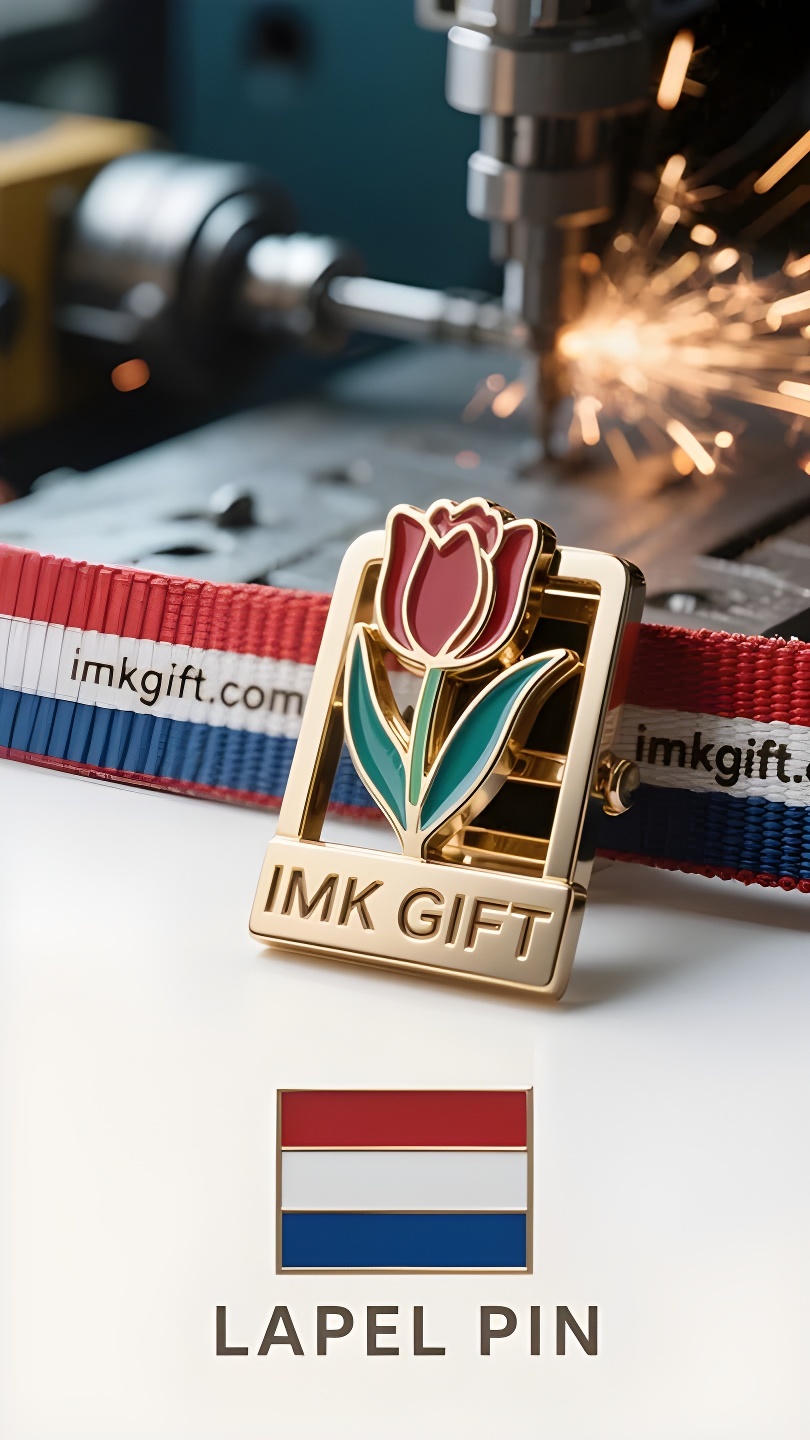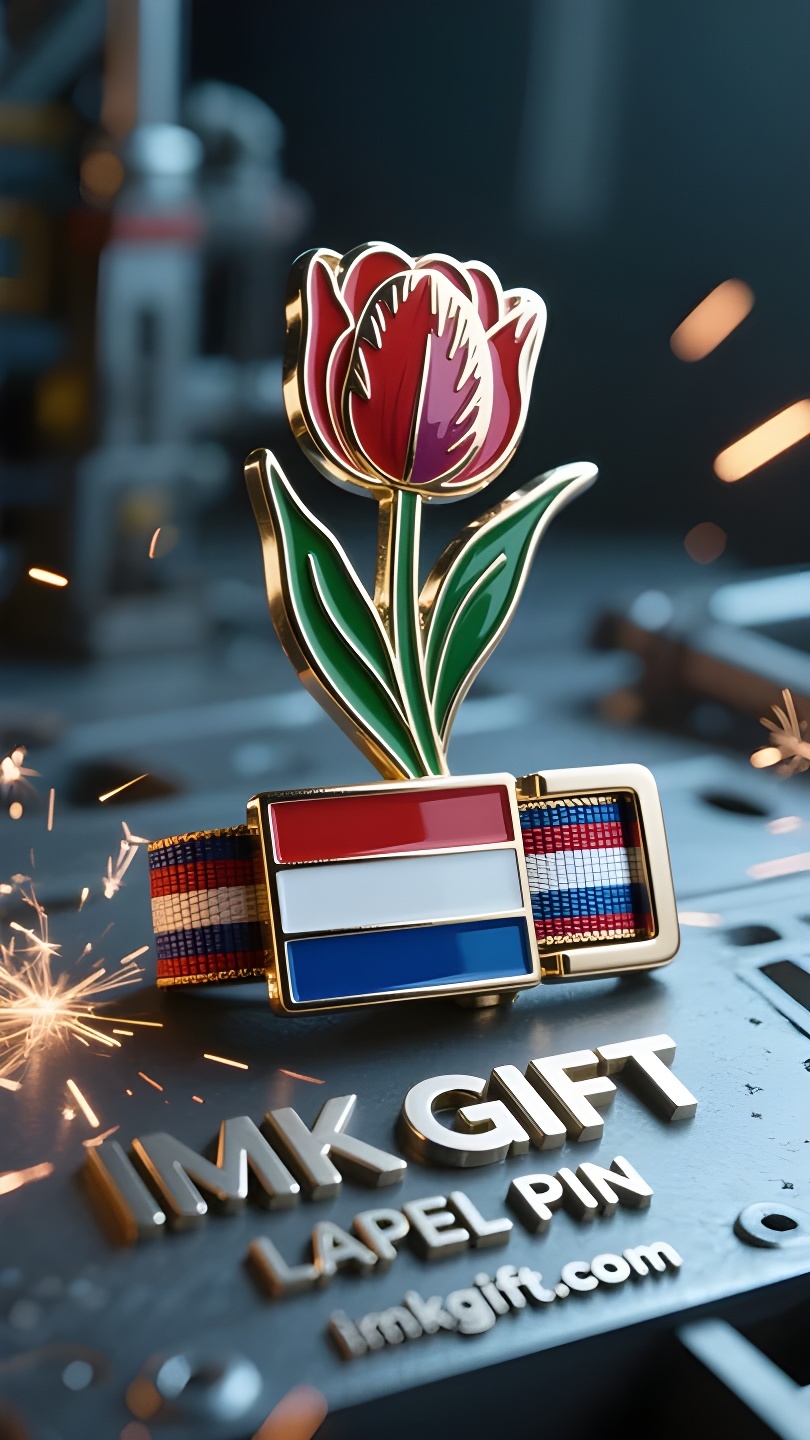in983-Tulpgesp-berg-en-rivierrecord
▼
In Nederland is de oranje gloed van de Koningsdagviering eind april nog niet verdwenen en staan de tulpen langs het kanaal volop in bloei. In dit land waar de driekleur wappert, gebruiken lokale ambachtslieden zilverdraad om een unieke tulpvormige riemgesp te maken. Het is niet alleen een concreet symbool van de nationale geest, maar bevat ook overlevingswijsheid die tijd en ruimte overstijgt. De rode, witte en blauwe kleuren van de Nederlandse vlag symboliseren respectievelijk het bloed van de maritieme pioniers, de zuiverheid van de commerciële beschaving en het geloof in de verovering van de oceaan. De transformatie van de tulp van economische zeepbel in de 16e eeuw tot nationaal symbool is een bewijs van de veerkracht van het nationale karakter. Toen de ambachtsman deze twee symbolen in de riemgesp smolt, werd het driekleurige emaille, gewikkeld in metalen bloemblaadjes, een spiritueel totem dat je bij je kunt dragen: rood als een zeil dat door de golven breekt en de drager eraan herinnert om uitdagingen het hoofd te bieden; wit als de ochtendmist op het kanaal, een waarschuwing om de oorspronkelijke bedoeling niet te verliezen; blauw als de golven van de Noordzee, die de moed opwekken om te ontdekken. In het Rijksmuseum in Amsterdam schittert de zilveren tulpgesp op de leren riem van een 17e-eeuwse koopvaardijkapitein nog steeds als nieuw. Deze metalen bloemen, die ooit de ambities van zeevaarders symboliseerden, waren getuige van de glorie en de dieptepunten van de gouden eeuw en ontwikkelden zich uiteindelijk tot de overlevingsfilosofie van “glorie gebonden om het middel, niet gedragen op de rug”. Hedendaagse ontwerpers borduren voort op deze wijsheid door elke riemgesp een verborgen, draaibaar ankervorm te geven – een eerbetoon aan de geschiedenis en een herinnering aan elk alledaags moment: ware glorie ligt in het voortdurend vasthouden aan idealen in plaats van in het verleden te blijven hangen. Wanneer in de lente de Keukenhof gevuld is met bloemen en mensenmassa’s, zorgen de glinsterende tulpengespen aan de tailles van de toeristen voor een mooi evenwicht tussen de schoonheid van de bloemblaadjes en de koude textuur van metaal. Het is net als in de eeuwige fabel van de mensen uit de laaglanden die romantiek met pragmatisme verenigen.
In late April in the Netherlands, the orange tide of King’s Day celebrations has not yet faded, and the tulips along the canal have reached their peak of bloom. In this land where the tricolor flag is flying, local craftsmen use silver wire to wrap a unique tulip belt buckle – it is not only a concrete symbol of the national spirit, but also hides the survival wisdom that transcends time and space. The red, white and blue colors of the Dutch flag correspond to the blood of the pioneers of navigation, the purity of commercial civilization and the belief in conquering the ocean. The tulip has become a national totem from the economic bubble in the 16th century, which just proves the resilience in the national character. When the craftsmen melt these two symbols into the belt buckle, the three-color enamel wrapped in metal petals becomes a spiritual totem that can be carried with you: red like a sail breaking through the waves, reminding the wearer to face challenges; white like the morning mist on the canal, reminding the wearer not to lose his original intention; blue like the waves of the North Sea, stirring up the courage to explore. In the Rijksmuseum in Amsterdam, the tulip silver buckle on the leather waistband of a 17th-century merchant captain is still as shiny as new. These metal flowers, which once tied the ambitions of sailors, witnessed the glory and low tide of the golden age, and finally settled into the philosophy of survival that “glory is tied around the waist, not on the back”. Contemporary designers continue this wisdom, making the buckle of each belt buckle hidden in a rotatable anchor shape – both a tribute to history and a reminder of every ordinary moment: true glory lies in constantly tying up ideals, rather than indulging in the past. When the Keukenhof Gardens in spring are surging with flowers and people, the tulip buckles shining on the waists of tourists are balancing the beauty of petals with the cold texture of metal, just like the eternal allegory of this lowland nation taming romanticism with a pragmatic spirit.
四月末的荷兰,国王节庆典的橙潮尚未褪去,运河畔的郁金香已迎来盛放高峰。在这片三色旗飘扬的土地上,当地匠人用银丝缠绕出独特的郁金香皮带扣——它不仅是民族精神的具象符号,更藏着穿越时空的生存智慧。
荷兰国旗的红白蓝三色,分别对应着航海先驱的血性、商业文明的纯粹与海洋征服的信念。而郁金香从16世纪的经济泡沫化身国家图腾,恰印证着民族性格中的韧性。当工匠将这两种象征熔铸于皮带扣,金属花瓣包裹的三色珐琅便成为随身携带的精神图腾:红如破浪风帆,提醒佩戴者直面挑战;白若运河晨雾,警醒莫失初心;蓝似北海波涛,激荡开拓勇气。
在阿姆斯特丹国立博物馆,17世纪商船长的皮质腰封上,郁金香银扣至今锃亮如新。这些曾系住远航者壮志的金属花朵,见证过黄金时代的辉煌与低潮,最终沉淀为“荣耀系于腰间,而非负于背上”的生存哲学。当代设计师延续这种智慧,让每枚皮带扣的卡扣都暗藏可旋转的船锚造型——既是对历史的致敬,亦是对每个平凡时刻的提醒:真正的荣耀,在于不断系紧理想,而非沉溺过往。
当春日的库肯霍夫花园涌动着花海人潮,那些闪耀在游客腰间的郁金香扣饰,正以金属的冷冽质感平衡着花瓣的娇艳,恰如这个低地民族用务实精神驯服浪漫主义的永恒寓言。
▼
Contact Us
📞 Tel: +0086-760-85286839
📧 Email: sales3@imkgift.com








